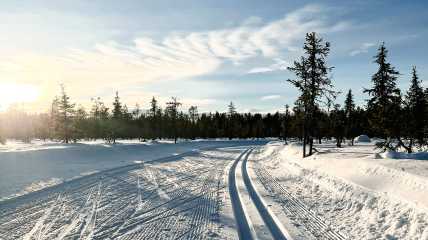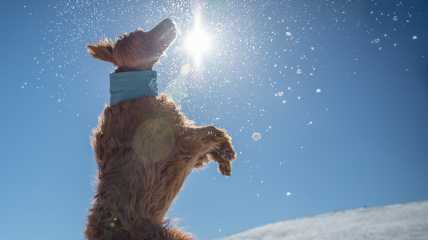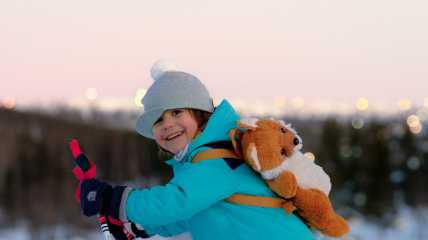
Cross-Country Skiing Techniques and Equipment
Read about cross-country skiing techniques and equipment. Levi ski trails cover over 200 kilometers of well-maintained tracks.
Cross-Country Skiing – A Versatile and Full-Body Workout
Cross-country skiing is an excellent winter sport that enhances endurance, strength, and balance. It is suitable for people of all ages and provides an opportunity to move efficiently in nature, whether at a relaxed pace or with high intensity. Cross-country skiing consists of two main styles: classic skiing and skate skiing.
Classic Cross-Country Skiing – Techniques and Equipment
Classic (techinique) cross-country skiing is based on alternating the skis on a groomed track, where the grip zone of the ski or waxing ensures sufficient traction for the push-off. The three main techniques of the classic style are:
Diagonal Stride – The fundamental technique of classic skiing, where one ski glides forward while the opposite ski pushes for propulsion. The arms alternate in pole pushes.
Double Poling – A technique preferred by more advanced skiers, where speed is generated solely by the arms and upper body muscles. It is effective on flat sections and gentle downhills.
One-Step Double Poling – A combination of diagonal stride and double poling, where a double pole push is executed after each kick. This technique is useful on slight inclines.
In addition to mastering the technique, choosing the right equipment is crucial. Classic cross-country skis are selected based on the skier’s weight and skill level. Classic skis are generally 20–25 cm longer than the skier and feature either a waxable or fish-scale grip zone. Cross-country ski boots provide ankle flexibility and comfort but have lower cuffs compared to skate ski boots.

Skate Skiing – A Fast and Dynamic Style
Skate skiing (free technique) differs from classic skiing in that skiers push off sideways and glide forward similarly to ice skating. Skate skiing has multiple techniques, such as V1 and V2 skating. This style requires strong balance and efficient timing of the push-off.
Skate skis are shorter and stiffer than classic skis, and poles are longer to support more powerful pushes. Proper skate ski boots provide good ankle support and enable efficient power transfer.
Ski Pole Length – Choosing the Right Poles for Classic and Skate Skiing
The length of ski poles significantly affects propulsion efficiency and natural movement.
For classic skiing, the appropriate classic ski pole length is about 83–86% of the skier’s height. This supports efficient pole pushes. The pole length for classic skiing influences the effectiveness of movement and balance on the track.
For skate skiing, poles are longer, typically about 90% of the skier’s height, as they help generate more force with each push.
Cross-Country Skiing and Strength Training – Which Muscle Groups Does It Work?
Cross-country skiing is a full-body workout that primarily engages the legs, arms, and core muscles. Classic skiing provides a well-rounded muscle workout, particularly strengthening the glutes, which are actively engaged on the track. The arms and shoulders also work with the ski poles, making it an excellent exercise for the entire body.
Skate skiing requires stronger leg work and core control, effectively strengthening both the gluteal muscles and the hip and thigh regions.
Cross-Country Skiing in Levi – Excellent Trails and Equipment Rental
Levi is one of Finland’s most popular winter sports destinations, offering excellent opportunities for cross-country skiing. Levi cross-country ski trails cover over 200 kilometers of well-maintained tracks, catering to both beginners and experienced skiers.
If you don’t have your own equipment, Levi offers several rental shops with high-quality skis, boots, and poles for both classic and skate skiing. Renting allows skiers to test different equipment and find the most suitable setup for their needs.
So, head to the trails, enjoy nature, and experience a fantastic winter workout – cross-country skiing is the perfect way to stay active in the winter!
See Levi equipment rental companies








